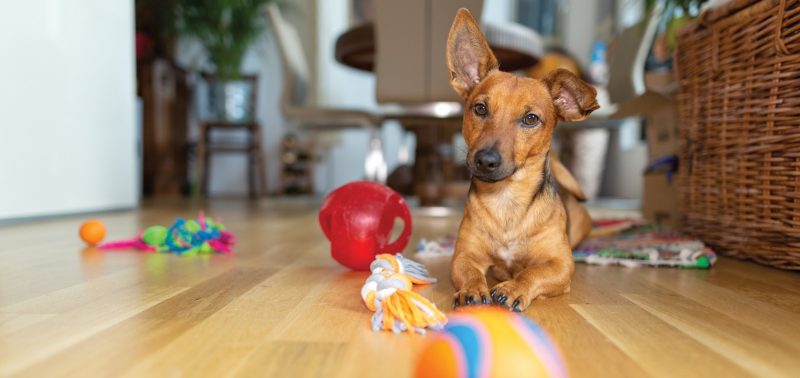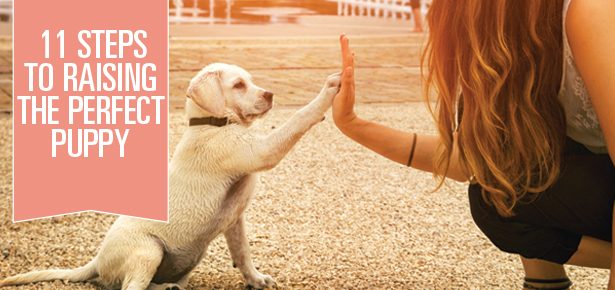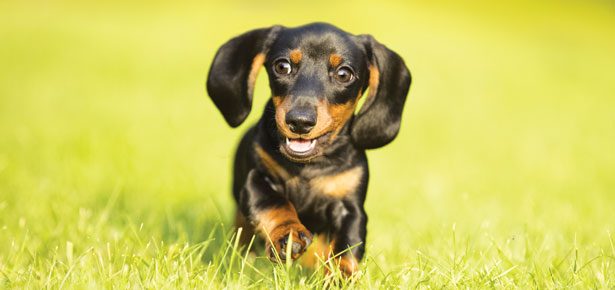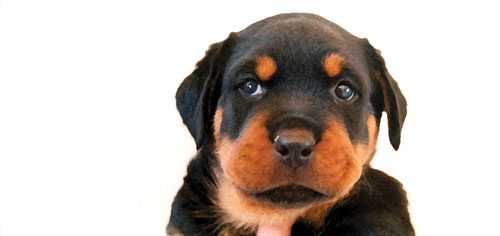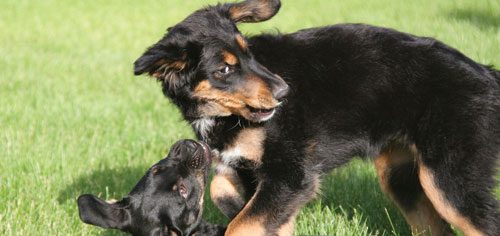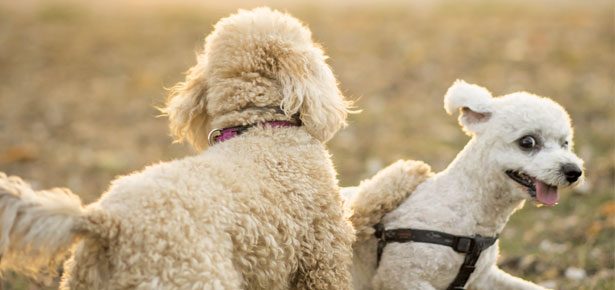
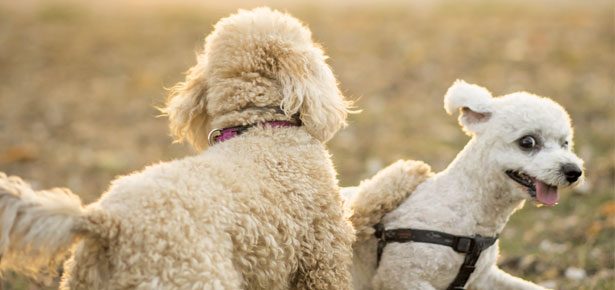
Dogs That Play Too Rough
Roughhousing at the Dog Park
Q: How can I get my dog to play nice? He gets over-excited and plays too rough with other dogs at the dog park. He also tries to play with dogs that obviously aren't into it. (He hasn't hurt any of his playmates but it scares their owners.) How can I help him dial down the intensity of his play?
A: I’m not a fan of dog parks—too much can go wrong. But I do respect your concern for other people and their dogs when your pup plays too roughly or solicits play from uninterested playmates. So, let’s talk about how you can go about ensuring everyone’s safety.
Dogs have different play styles depending on their breed, age, and other factors, but they generally understand each other’s body language. The first step in getting your dog to play nicely with others is for you to become very familiar with canine body language so that you can notice when tensions are first starting to build.
When I was filming at my local dog park for my DVD Dissecting the Dynamics of Dog-Dog Play, I captured hundreds of hours of footage of dogs interacting. In editing this immense amount of footage, I was able to break things down into body language and signals that indicate play is becoming too rough or overwhelming. Allow me to share some of these elements.
When dogs are romping happily together, their bodies are like limp noodles.
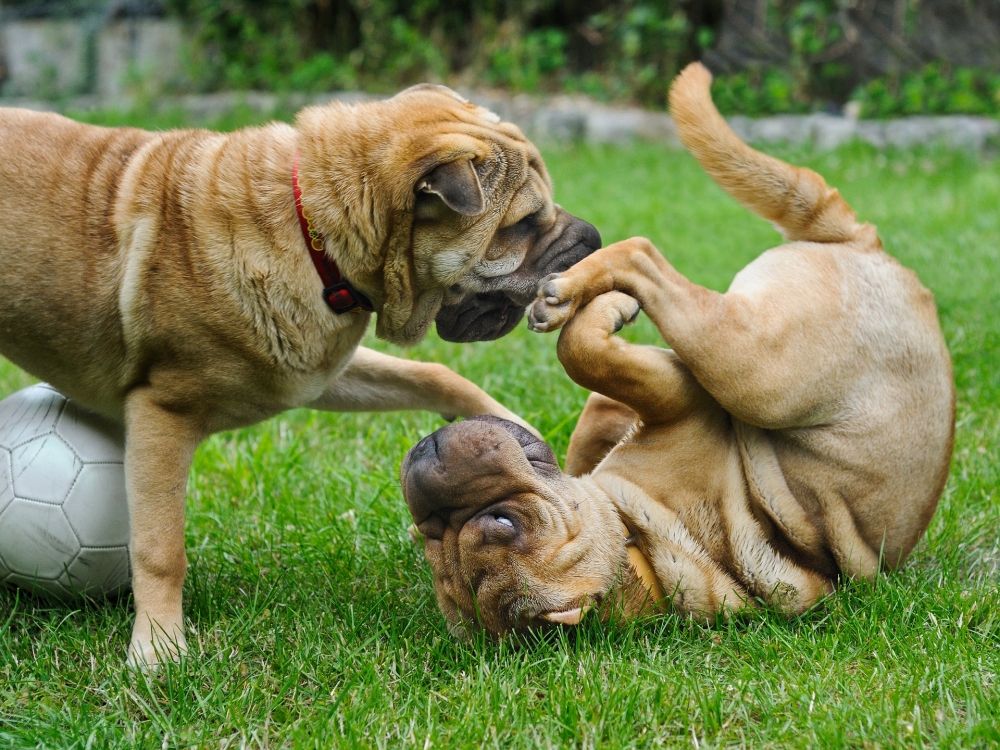
As far as the play itself, one thing to be wary of is speed and intensity.
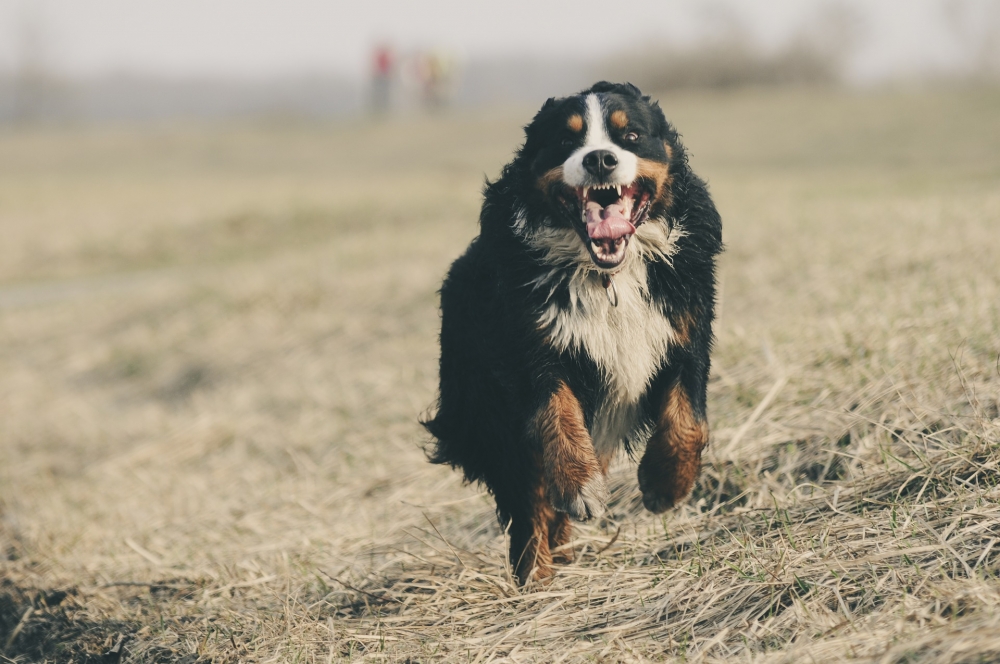
If you notice that your dog is becoming overexcited or playing too roughly, or that other owners are becoming concerned, create an enforced break in the action by calling your dog to you.
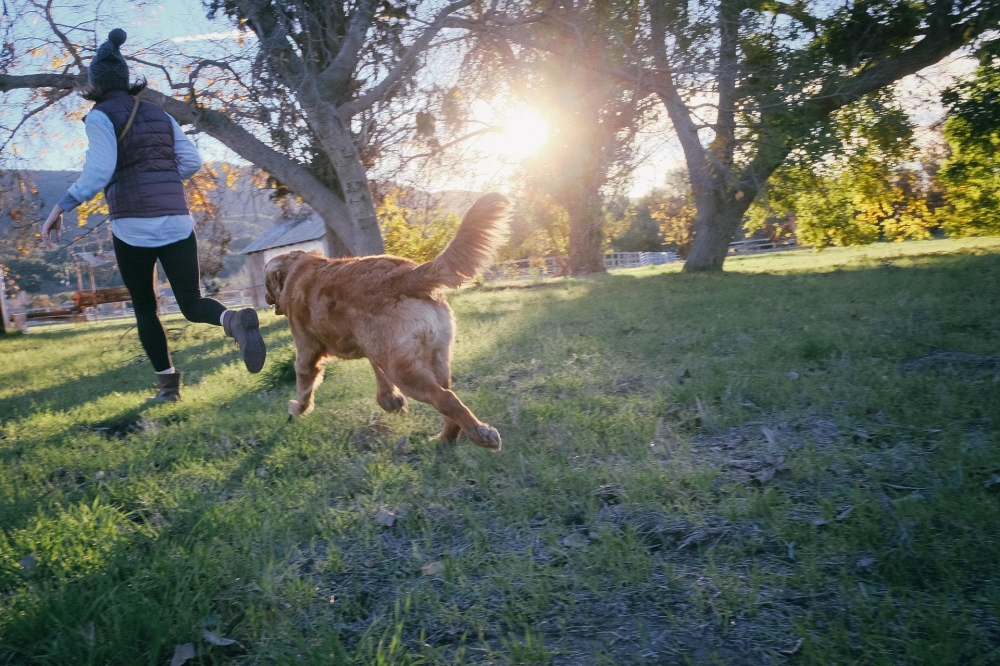
Want to learn more about dog behaviour? Check out our articles on dog training!
Join the newsletter and never miss out on dog content again!
"*" indicates required fields
By clicking the arrow, you agree to our web Terms of Use and Privacy & Cookie Policy. Easy unsubscribe links are provided in every email.
